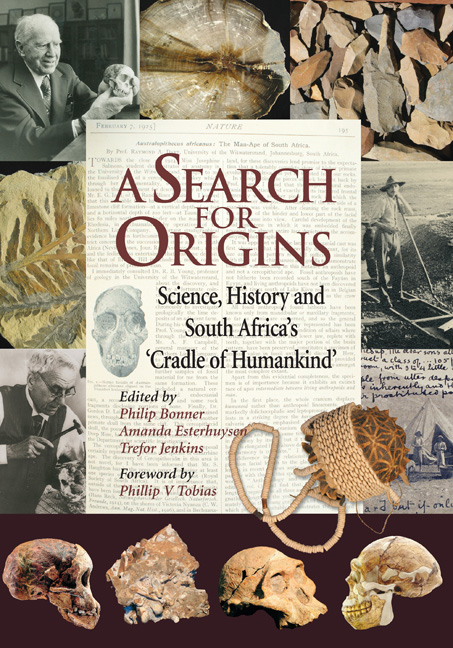Book contents
- Frontmatter
- Contents
- Map
- Foreword
- PART 1 Introduction: Africa is Seldom What It Seems
- PART 2 Introduction: Fossils and Genes: A New Anthropology of Evolution
- PART 3 Introduction: The Emerging Stone Age
- PART 4 Introduction: The Myth of the Vacant Land
- PART 5 Introduction: The Racial Paradox: Sterkfontein, Smuts and Segregation
- Epilogue: Voice of Politics, Voice of Science: Politics and Science After 1945
- Notes, references and recommended reading
- Notes on contributors
- Acknowledgements
- Index
PART 2 - Introduction: Fossils and Genes: A New Anthropology of Evolution
Published online by Cambridge University Press: 31 May 2019
- Frontmatter
- Contents
- Map
- Foreword
- PART 1 Introduction: Africa is Seldom What It Seems
- PART 2 Introduction: Fossils and Genes: A New Anthropology of Evolution
- PART 3 Introduction: The Emerging Stone Age
- PART 4 Introduction: The Myth of the Vacant Land
- PART 5 Introduction: The Racial Paradox: Sterkfontein, Smuts and Segregation
- Epilogue: Voice of Politics, Voice of Science: Politics and Science After 1945
- Notes, references and recommended reading
- Notes on contributors
- Acknowledgements
- Index
Summary
The ‘Cradle of Humankind’ is so named because of the stunning palaeoanthropological discoveries which have been made in that area, firstly by Robert Broom in 1936, and over the subsequent seventy years by a number of other scientists and their dedicated helpers. The hominid fossils found there cover a time span of from 3 or 4 million years ago to perhaps 500 000 years ago and are well described by Kevin Kuykendall in Chapter 3 of this section, as are the plants which populated this area over the same period of time and which are discussed by Marion Bamford in her presentation of the available evidence in Chapter 5. Little attention is given to the faunal (that is, non-hominid) remains, but these have been studied by Basil Cooke, Lawrence Wells and Bob Brain over many years, and by younger researchers as well.
In Chapter 2, Kevin Kuykendall and Goran Štrkalj introduce the reader to the birth of palaeoanthropological research in South Africa and its development as a scientific discipline in a country ‘that was struggling for political recognition by the West, and during which time the foundations of the conservative apartheid political system, for which South Africa became infamous, were formulated.’ Dart's discovery, description and interpretation of the ‘Taung child’ in 1925 (Taung is situated in the North West province, some 500 kilometres west of the Cradle) flew in the face of the orthodox view of human origins held at that time, and it took another twenty years before Dart was fully vindicated. In 1936 Broom discovered an adult fossil skull (Australopithecus transvaalensis) at Sterkfontein; it was initially named Plesianthropus transvaalensis and was considered to be an adult version of Dart's australopithecine child from Taung, thereby contributing to the vindication of Dart's initial 1925 claim. Further discoveries by Broom and his associates at Kromdraai and Swartkrans, situated close to Sterkfontein in what is now known as the ‘Cradle of Humankind’, provided additional insights into the anatomy of humankind's early ancestors.
Broom, discussing his discoveries at Sterkfontein, Kromdraai and Swartkrans, wrote in one of his last books, Finding the Missing Link (1950), that more discoveries would be made and that ‘our caves when fully worked, as they will probably be in the next fifty years, will almost surely give us many more genera’ (Broom 1950: 57).
- Type
- Chapter
- Information
- A Search for OriginsScience, History and South Africa's ‘Cradle of Humankind’, pp. 23 - 27Publisher: Wits University PressPrint publication year: 2007



